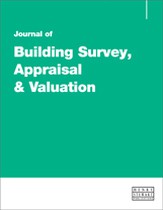Daylight and density: The application of the Housing SPG policy on daylight
Abstract
In May 2017, GIA published a report in collaboration with London First titled ‘Guiding Light, Unlocking London’s Residential Density’.1 The report recommended that the new London Plan (LP), then about to be published in draft, consider an evidence-based and contextually-founded approach to the delivery of greater urban density, where this can be supported. Among other density metrics proposed in the paper, a new approach to daylight and sunlight guidance for dense urban environments was advocated as one of the key components to achieving a significant increase in new housing and maintaining good quality amenity. This approach followed on from the work GIA completed in relation to the current Housing Supplementary Planning Guidance (SPG 2016),2 where a contextual approach to daylight assessments was formalised into policy for the first time. This paper discusses the application of the Housing SPG policy on daylight through the specific example of the Whitechapel Estate consent, which was granted following a planning appeal. The Whitechapel Estate appeal was the first to consider an example of applied contextual density study, which was adopted in response to a planning refusal on the grounds that the proposal: ‘would cause harm to the amenity of occupiers of neighbouring properties with undue sense of enclosure and unacceptable losses of daylight and sunlight’.
The full article is available to subscribers to the journal.
Author's Biography
Simone Pagani MSc MSLL, joined GIA in 2007 and established the Daylight+Solar Design (D+SD) Department with the aim of helping architects and developers optimise the use of daylight and sunlight amenity in the built environment. D+SD is the largest dedicated daylight design team in the UK, providing specialist advice, innovative and bespoke analyses such as solar glare, light pollution and solar convergence. Simone has worked on key regeneration projects including Battersea Power Station, as well as several iconic towers in London such as the Walkie-Talkie, 22 Bishopsgate and 100 Leadenhall. Most recently, Simone led the research resulting in a publication entitled ‘Guiding Light, Unlocking London’s Residential Density’, in collaboration with London First, which explores new ways of achieving density in the urban environment. The research work influenced the Housing SPG and London Plan, and was successfully applied in the Whitechapel Estate Appeal presented in this paper.
Citation
Pagani, Simone (2018, September 1). Daylight and density: The application of the Housing SPG policy on daylight. In the Journal of Building Survey, Appraisal & Valuation, Volume 7, Issue 2. https://doi.org/10.69554/PJOH4690.Publications LLP
